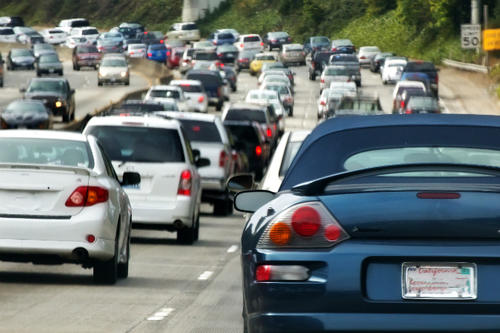
Annually updated research from the Accessibility Observatory at the University of Minnesota estimates the impact of traffic congestion on access to jobs for the 50 largest (by population) metropolitan areas in the United States.
The new rankings are part of the Access Across America study, which began in 2013. The rankings focus on accessibility, a measure that examines both land use and transportation systems. Accessibility measures how many destinations, such as jobs, can be reached in a given time.
“Rather than focusing on how congestion affects individual travelers,” explained Andrew Owen, director of the Observatory, “our approach quantifies the overall impact that congestion has on the potential for interaction within urban areas.”
The study, which is based on data from 2017, also ranks access to jobs by car for the 50 largest U.S. metro areas. Cars, trucks, and other private motor vehicles are used for an estimated 86 percent of commuting trips in the United States, making it the most widely used commute mode.
According to the latest data, the Minneapolis–Saint Paul metropolitan area ranks 7th nationally in access to jobs by auto. The study reports that the average worker traveling by auto in the Minneapolis–Saint Paul metro can reach 875,049 jobs within 30 minutes. Total employment in the metro area is 1,794,806 (14th nationally).
Minneapolis–Saint Paul ranks 28th in lost access to jobs because of traffic congestion. The average worker traveling by auto in the Minneapolis–Saint Paul metro can reach 26 percent fewer jobs within 30 minutes during congested periods.
“This suggests that job accessibility is influenced less by congestion here than in other cities,” Owen said.
This year’s report—Access Across America: Auto 2017—presents detailed accessibility and congestion impact values for each of the 50 metropolitan areas, as well as detailed block-level maps that illustrate the spatial patterns of accessibility within each area.
Key factors affecting the rankings for any metro area include the number of jobs available and where they are located, the road network structure, traffic management practices, the provision of alternate transportation modes, and population size, density, and location. Better coordination of transportation systems with the location of jobs and housing will improve job accessibility by auto.
The findings have a range of uses and implications. State departments of transportation, metropolitan planning organizations, and local government agencies can apply the evaluations to performance goals related to congestion, reliability, and sustainability. In addition, detailed accessibility evaluation can help in selecting between project alternatives and prioritizing investments.
The research is sponsored by the National Accessibility Evaluation Pooled-Fund Study, a multi-year effort led by the Minnesota Department of Transportation and supported by partners including the Federal Highway Administration and 11 additional state DOTs.
The Accessibility Observatory at the University of Minnesota is the nation's leading resource for the research and application of accessibility-based transportation system evaluation. The Observatory is a program of the Center for Transportation Studies. CTS is a national leader in fostering innovation in transportation.
The Auto 2017 report and other Access Across America research reports for transit, walking, and soon biking, are available at access.umn.edu.
###
Detailed interactive color maps illustrating the jobs accessible by auto in each metro area are available on the study web page at Access Across America: Auto 2017.
Accessibility Observatory director Andrew Owen is available for an on-camera interview (live shot or tape) via the University of Minnesota ReadyCam® studio, which is remotely controlled by VideoLink professionals and equipped with broadcast lighting, fiber optic and satellite capabilities, and a robotic camera.
- Categories:
- Science and Technology





